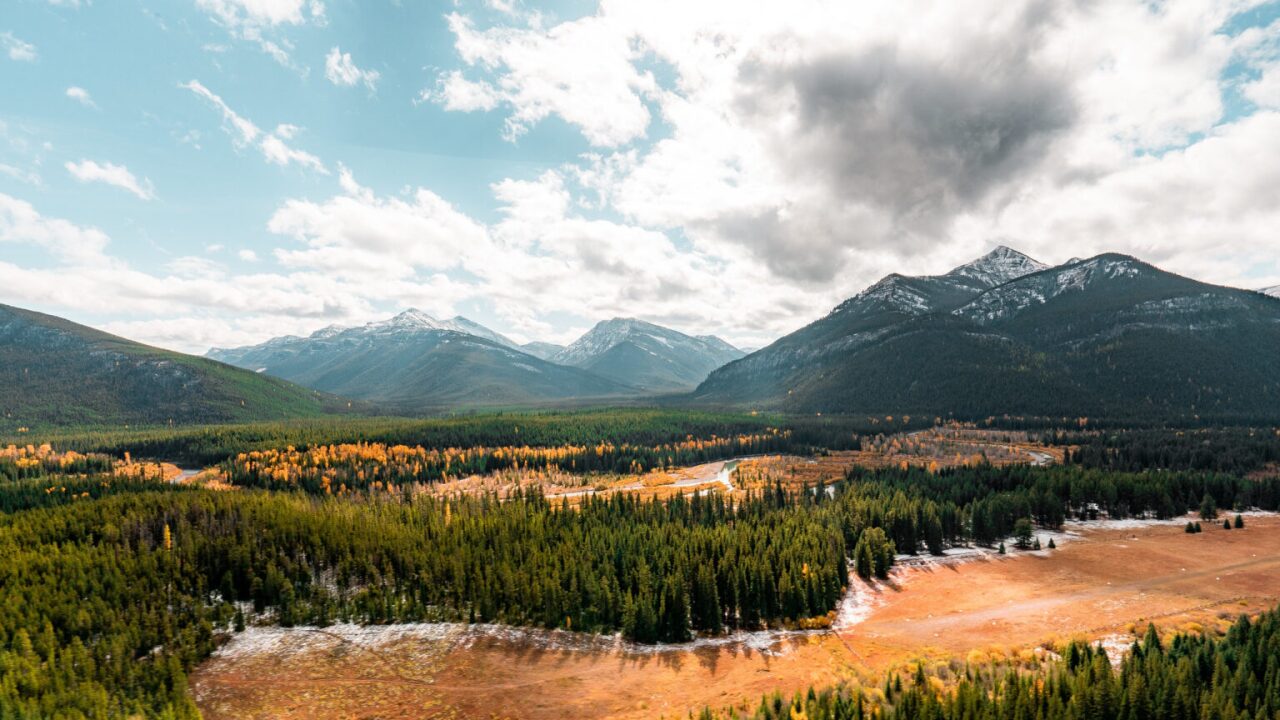Four conservation groups have filed a lawsuit in federal court accusing the United States Forest Service and in particular, Flathead National Forest, of ignoring its own scientists to push ahead on a logging project that would likely imperil grizzly bears and cut old-growth forests.
The lawsuit also claims federal forest officials have intentionally created two adjacent logging projects that would have likely violated federal laws if combined, and instead split them up into two smaller projects to avoid scrutiny.
The United States Forest Service told the Daily Montanan it does not comment on pending litigation.
The quartet of groups — Native Ecosystems Council, Council on Wildlife and Fish, Alliance for the Wild Rockies, and the Yellowstone to Uintas Connection — filed the complaint on Monday in Missoula.
The lawsuit claims that the Cyclone Bill Logging Project, which is approximately 13 miles west of Whitefish, will cut and burn on more than 12,000 acres, which includes habitat of the Canada lynx and grizzly bears, both of which are protected by the Endangered Species Act.
The groups said that the forest service’s decision, finding that the project posed no significant impact, ignored the best available science as well as the opinions of biologists working for the federal government via the United States Fish and Wildlife Service.
For example, the lawsuit alleges the project would reduce grizzly habitat temporarily, add roads that would permanently impact them, and the adjacent logging project, the Round Star Project, would permanently eliminate grizzly bear habitat by 774 acres.
The conservation groups point out that the Cabinet-Yaak Ecosystem, which is designated as a grizzly bear recovery zone is just 35 miles away from the project, and the forest area is essential for bears as they begin to repopulate, and necessary for more diverse genetics. Groups contend that the Cyclone Bill Project area is an “essential linkage corridor for female bears.”
The road-less traveled
The lawsuit also centers on the number of new and permanent roads that would be built by the logging projects. Multiple lawsuits have been successfully waged against the Forest Service because it expands the number of permanent and temporary roads in national forest land.
Scientific studies continue to point to roads as being one of the largest deterrents for grizzly bears and habitat. According to the lawsuit and the Forest Service’s own documentation, the project would add 11.4 miles of new roads and 2.5 miles of temporary roads. The conservation groups note that this would push the road density in the area above the scientific threshold for grizzly bear tolerance.
The federal government’s own scientists agree the area is already being disturbed, and the logging project will likely further disrupt grizzly bear habitat.
“Fish and Wildlife Service opines that grizzly bears using the action area may already be experiencing disturbance effects in some areas … as a result of construction and administrative use of closed roads,” it said. “The project may result in additional under-use of suitable habitat by individual female grizzly bears, potentially disrupting normal breeding (or more specifically, cub rearing) or feeding patterns in the short-term.”
The suit lists multiple scientific studies which repeatedly point out that grizzly bears, especially females, learn to avoid areas where there are motorized vehicles.
Scientists also point out that the cumulative effects of the logging project will like reduce the “natural food sources and (increase) grizzly bear mortality risk.”
Old-growth forest concerns
The lawsuit also challenges the Forest Service because the Cyclone Bill project would target old-growth forests. The Forest Service’s own data shows that 5,900 acres of National Forest land within the project area qualify as old-growth.
The lawsuit contends that logging some of the old-growth areas contradicts the Flathead National Forest’s plan which states, “Promoting the develop of future old-growth forest is also a key strategy (of) the forest and in the forest plan’s management direction as a means of addressing future uncertainties related to climate change and its effects of disturbances and old-growth forests.”
The lawsuit said that many bird species, including flammulated owls, northern goshawks and black-backed woodpeckers rely upon the old-growth forests in Montana.
“The project environmental analysis does not consider, explain, or otherwise analyze, which, if any, old-growth dependent wildlife species could survive in such heavily logged conditions created by the Cyclone Bill Project,” the court documents said.
Side-stepping scrutiny?
The lawsuit also said the Forest Service appears to be sidestepping scrutiny by proposing the Cyclone Bill and the Round Star projects as separate, individual projects, rather as a whole project. The conservation groups say that the Forest Service is likely doing this to hide the details of the project which may be more obvious if the two projects were combined.
“Cyclone Bill and Round Star are two adjacent project that were developed in tandem, located side-by-side, and authorized less than a year apart,” the court documents said. “The Forest Service refused to analyze these two similar and adjoining projects together, and instead issued findings of no significant impact for both projects without considering the cumulative impacts from both projects together.”
Attorneys Oliver Wood and Alizabeth Bronsdon said that the U.S. Ninth Circuit Court of Appeals, of which Montana is a part, has repeatedly ruled projects closely related in terms of time and location must be analyzed together.
“The National Environmental Policy Act does not allow an approach that would permit dividing a project into multiple ‘actions,’ each of which individually has an insignificant environmental impact, but which collectively have a substantial impact,” the appeals court said in a 2002 ruling.
The groups are asking federal magistrate Kathleen DeSoto to declare that the logging project violates the law, vacate the Forest Service’s finding of “No Significant Impact,” and send the plans back to the Forest Service for modification until it complies with the law.
Daily Montanan is part of States Newsroom, a nonprofit news network supported by grants and a coalition of donors as a 501c(3) public charity. Daily Montanan maintains editorial independence. Contact Editor Darrell Ehrlick for questions: info@dailymontanan.com.


